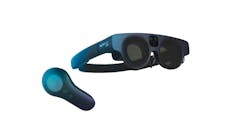Noregon CSO Sandeep Kar talks diagnostics, prognostics, and future of maintenance
In a move to shift commercial vehicle maintenance from a diagnostics to prognostic mindset, Noregon Systems has hired industry veteran Sandeep Kar as chief strategy officer. Kar’s 20+ years of experience includes stops at India-based original equipment manufacturer Tata Motors, consulting and research firm Frost & Sullivan, and telematics provider Fleet Complete. In between, he also received a master’s degree in heavy truck dynamics from Concordia University in Montreal.
Noregon plans to leverage Kar’s deep understanding of advanced technologies, econometrics, applications, and markets to steward the company’s long-term vision and enhance its major product platforms such as JPRO shop diagnostic software and TripVision remote diagnostics and fleet-asset management tool.
“His wealth of knowledge and forward-thinking will be a major asset for the company as we prepare to achieve unprecedented growth,” Noregon CEO Bill Hathaway said.
That knowledge can also be a major asset to our readers, so Fleet Maintenance recently spoke with Kar to share a little of what he has learned about the CV industry, maintenance challenges, and how technology will redefine shop operations.
[Lightly edited for length and context]
Fleet Maintenance: Why did you decide to take the role of CSO at Noregon?
Sandeep Kar: I've spent my entire career in the heavy trucking industry globally, and the business model transformations that I've seen the past 20 years are right now the inflection point. We are in a unique moment in our industry with descriptive analytics becoming predictive and prescriptive.
As I started to drill deeper into Noregon’s business model, and understanding its solution and product roadmap, it became very clear to me that this company is so central right now for the growth and evolution of the commercial vehicle industry, and hence, the economy of United States and North America. I had to take part in that action.
Look at who's working in freight on trucking today—the biggest players of tech, whether it's Tesla, Google, Amazon, or Uber. This is the most important sector for all of these tech bigwigs. The reason behind that is even a small enhancement in safety and efficiency in this industry will have massive cascading impact on all corners of our economy.
For example, one percentage point or one psi enhancement in tire pressure actually has a multiplying effect because it causes less tire wear and tear, enhances vehicle safety, and also delivers fuel efficiency benefits. Data analytics has such a profound impact that somebody who has nothing to do with trucking will go to buy a carton of milk and benefit from that as well. So that's how important this this industry is. And that's how important these technologies are in enhancing safety, efficiency, and efficacy of this industry.
FM: What will you be doing as chief strategy officer and how will that change the company?
SK: One of my primary responsibilities will be to continue building on the prescriptive and predictive analytics capabilities Noregon has today. Diagnostics data are the foundation on which this 30-year-old company was built, and if you take away that data, you cannot build prognostic solutions. Predictive maintenance is built on machine learning, artificial intelligence, and algorithms that are built on massive amounts of data. And the more the data volume, the better the solution gets, because that's how the models are tweaked and are polished and made better in terms of accuracy, reliability, and durability.
The foundation is there; my role is to keep building that superstructure so that we can enhance the predictive and prescriptive solutions we bring to the market and ensure they are intuitive and drive value for the entire ecosystem.
FM: What the biggest difference between when you started your career and now?
SK: During my time at Tata Motors in the late 90s and early 2000s, the proliferation of disparate electronics hadn't started as much as it is now. The focus was on mostly mechanical systems, and within those, the proliferation was on engine ECUs and ECMs. At that time, no OEM was capturing data for diagnostics purposes, so that was a complete blue ocean area.
And in the past, the information that was provided to fleet managers by telematics solutions and OEMs was largely descriptive. Where is my vehicle? That was determined by GPS coordinates. Why did the vehicle get into the accident? Because we detected harsh braking or accelerating. Today, thanks to big data analytics and IoT data, artificial intelligence and machine learning, etc., being deployed into that data asset, the information inside is more predictive in nature, so we can predict certain outcomes before those outcomes happen.
And the future is going to be prescriptive in nature, where you can prescribe a certain business outcome. And that is where the real value lies.
An example of prescriptive maintenance is effectively analyzing vehicle operation and service/maintenance data to identify the optimal RPM ranges, which can then be prescribed to fleets for delivering higher powertrain efficiency and safety as well as lower total cost of ownership and environmental footprint.
FM: When did you notice things start to change?
SK: In 2007, as an industry analyst and advisor for Frost & Sullivan, we did a survey for the top 100 fleet managers in the US. And we asked them a very simple question: Are you willing to pay $6 per vehicle per month and get back office automation and routing and scheduling solutions, or would you pay $12 a month and get prognostics. This was during the recession, and over 50% of the surveyed fleet manager said we are willing to pay $12 a month and get predictive maintenance diagnostic solutions.
At that time, prognostics was not even an option, so that told me very early on that there is a tremendous amount of market pull for solutions that help reduce downtime. And why not? Downtime is the biggest enemy of any fleet manager.
In an era where Amazon and others are promising next day delivery or same day delivery of freight, something has got to bring that freight at your doorstep on time, every time. And it's a commercial vehicle. We need to make sure those commercial vehicle runs with higher degree of uptime.
FM: What are some industry challenges you see fleets having to contend with going forward?
SK: The biggest challenge is that these vehicles are getting more and more complicated. Each and every system in the vehicle now is getting 'sensor-ized,' which means the moment you put a sensor in this vehicle, you're expecting data coming out of the sensors. That data can be captured and analyzed to create better systems and solutions in the future, and married with other sources of data to create more profound solutions around freight matching and all those other kinds of technologies.
The problem is too much data, too little information. We don't want to inundate technicians and fleet managers with way too much data. So we need to deliver actionable insights over an intuitive and easy-to-interpret and understand UI. Because there’s not enough younger technicians joining the industry, and the ones who are coming in are used to simple clean UI, as they see in their phones and other digital platforms. And the older technicians who are retiring also need intuitive solutions, because we don't want to complicate matters for them and convolute the insights being delivered.
That's our mission, and I think that's really the mission for anybody in the diagnosis/prognosis industry.




